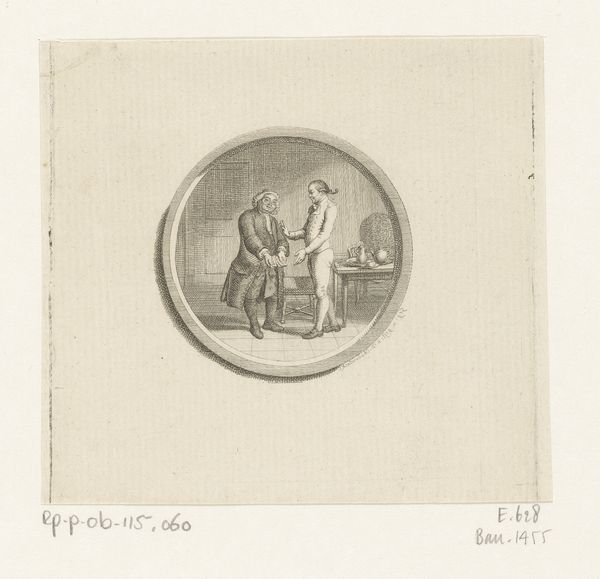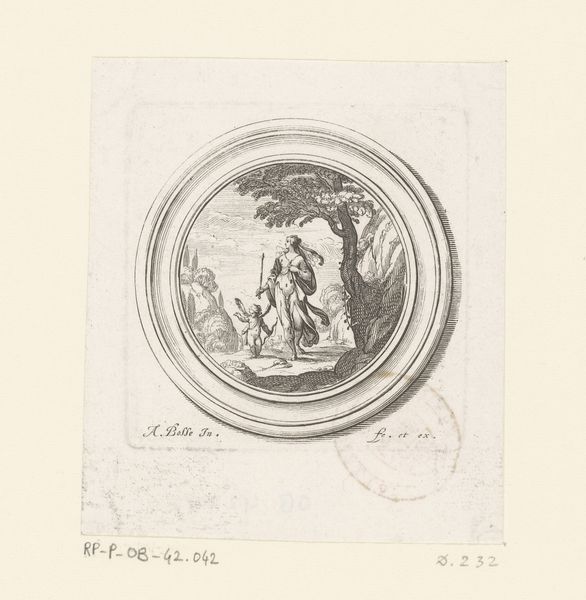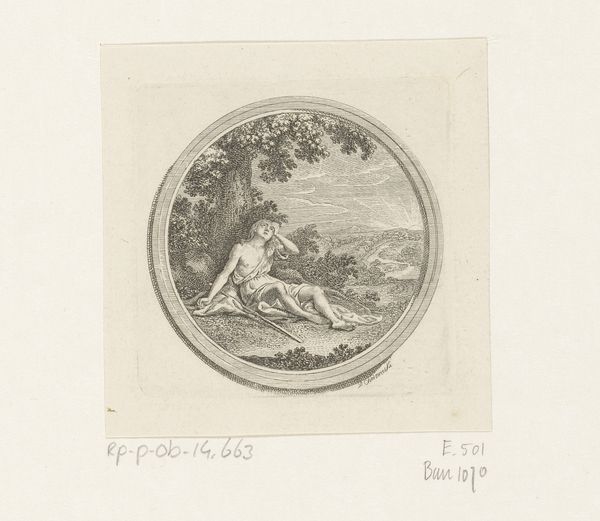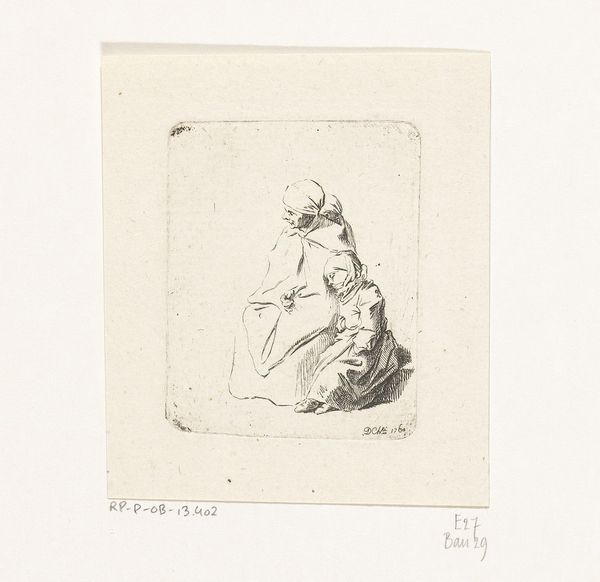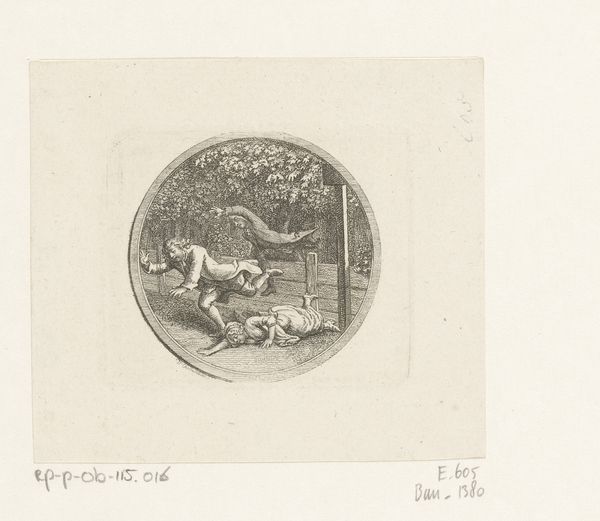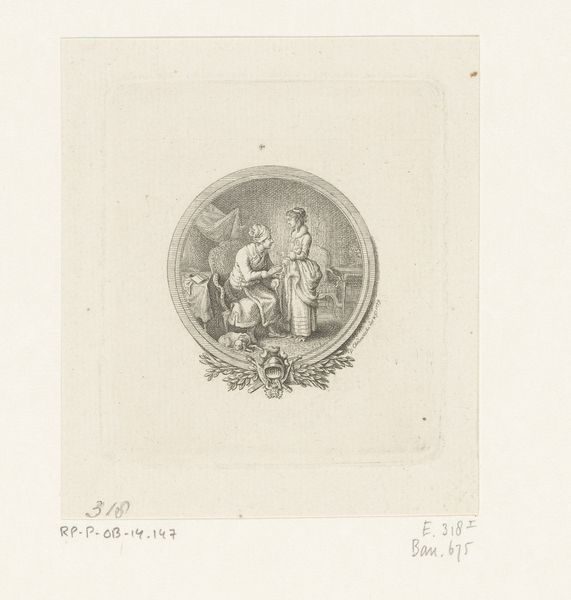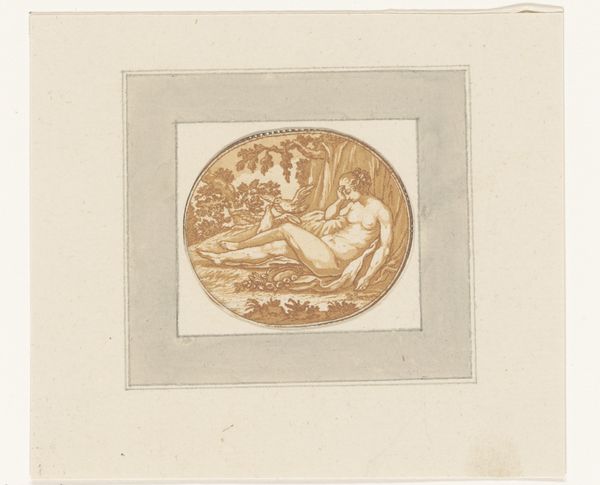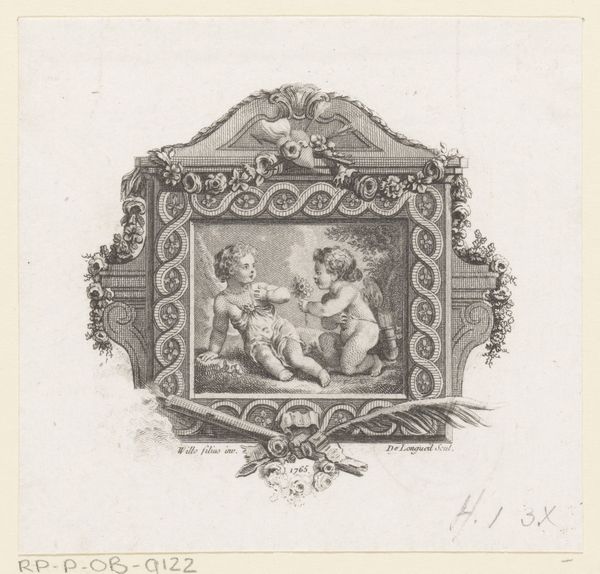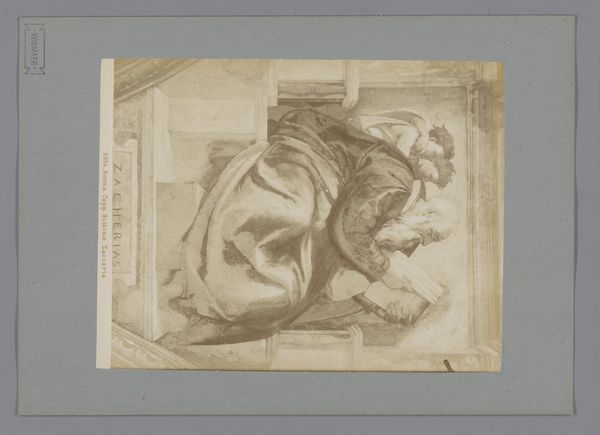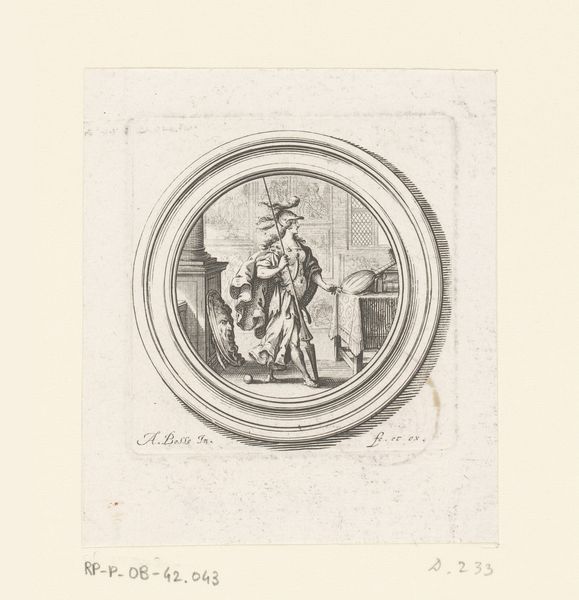
Medea omhelst haar kinderen, waarna ze hen met een dolk doodt 1787
0:00
0:00
Dimensions: height 57 mm, width 63 mm
Copyright: Rijks Museum: Open Domain
Editor: So, this etching from 1787, Daniel Nikolaus Chodowiecki’s *Medea omhelst haar kinderen, waarna ze hen met een dolk doodt* – Medea embracing her children before killing them with a dagger – is intense! It's got this claustrophobic feel with the figures pressed into a small circle. What do you make of it? Curator: Ah, yes. It’s interesting, isn’t it? Chodowiecki's choice of framing really enhances the drama. But beyond the obvious horror of the infanticide, I see a heart-wrenching portrait of a woman cornered, driven to extremes by betrayal and societal constraints. Have you ever considered how much control women had at the time? It's all about the loss of control, the desperation. A dreadful twist on motherly affection. Editor: That's a completely different take than I was expecting. I was just focused on the…you know, the horror. Curator: Isn't it often the case? Art throws our prejudices back in our faces and whispers something deeper. Look at Medea's embrace – is it purely sinister, or does it contain a trace of maternal love even in this moment of madness? Perhaps she saw it as an act of control, protecting them from a life of possible vengeance and hardship? Editor: I never thought of that. It does change how you view the work. I guess there's more to baroque art than dramatic lighting and sharp edges. Curator: Absolutely! It's a portal into the messy realities of human experience. Always challenging and usually much to contemplate. It makes me want to revisit other versions of Medea now. Editor: Yeah, I'm seeing that now! Thanks for the insights!
Comments
No comments
Be the first to comment and join the conversation on the ultimate creative platform.
